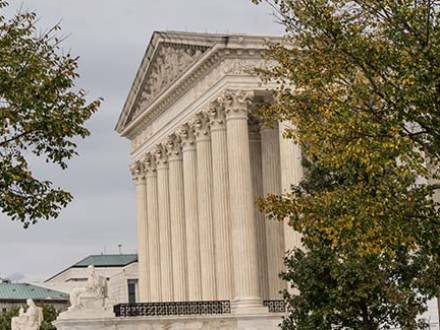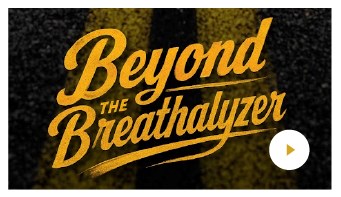TRIAL ADVOCACY TUESDAY TIPS AND TRICKS - CASE #3: Navarette v. California
 I am here with the 3rd installment of trial advocacy Tuesday - some tips and tricks for you to consider based on the most recent Fourth Amendment Friday Fundamentals case, Navarette v. California.
I am here with the 3rd installment of trial advocacy Tuesday - some tips and tricks for you to consider based on the most recent Fourth Amendment Friday Fundamentals case, Navarette v. California.
As a reminder, Navarette was a Supreme Court case where a 5-4 majority, led by Justice Thomas, found sufficient reasonable suspicion to stop a car based on an anonymous tip from a 911 caller reporting a description of the car, the car’s location, and that the car has, "run them off the road." This was held despite the complete and utter lack of any deviant driving behavior that the police themselves observed when they located the truck and followed it for a full five minutes. (Justice Thomas’ explanation for this was that drunk drivers can turn their inebriation off when the boys and girls in blue are behind them).
Seeming to fly in the face of Florida v. J.L. and other prior SCOTUS cases requiring corroboration and predictive details in order to determine the reliability of the anonymous tip, Navarette is still the prevailing SCOTUS decision in this area. But I was taught in law school that if the law is against you, argue the facts. If the facts are against you, argue the law. If the law AND the facts are against you, pound the table and shout at the top of your lungs. Orrrrr……distinguish.
Trial Advocacy Tip #1: Pre-Trial Motion to Suppress – Distinguish Based on State Law Protection
Yes, the Supremes are Supreme. But they establish the floor, not the ceiling. So here are a few state cases that I found (and please, if it is from your state, and I don’t have it right, or it has been overturned, let me know) that rejected Navarette based on its own Constitutional protections:
- In a 2014 case coming out of the Supreme Court of Nebraska, State v. Rodriguez, 288 Neb. 878, 852 N.W.2d 705 (2014) reversed a DUI CONVICTION with an order for a new trial. It distinguished the call in the case at bar – a call reporting an isolated episode of past recklessness (caller said he had been pushed out of a moving vehicle) – from the call in Navarette, which was reporting behavior that created reasonable suspicion of an ongoing crime such as DUI.
- In a 2015 case coming out of the Supreme Court of Washington, State v. Z.U.E., 183 Wash.2d. 610, 352 P.3d 796 (2015) (en banc), reversed the trial court’s denial of the motion to suppress a stop for lack of reasonable suspicion. That decision – relying heavily on Washington case law – established that the State needed to provide circumstances demonstrating informant reliability or corroborative information of criminal activity.
- In our third case, Commonwealth of Massachusetts v. DePeriero, 473 Mass. 450, 42 N.E.3d 1123 (2016), the state’s highest Court upheld the stop, but declined "to endorse the Supreme Court’s reliance on the use of the 911 system as an independent indicium of reliability for an anonymous tip."
Similar cases from other states have held that there are stronger protections for citizens on state grounds.
Trial Advocacy Tip #2: Discredit the Content of the Call to Separate the Purported Erratic Driving Behavior From Anything the Officer Observed
In a recent case at my firm, a 911 caller reported a black Ford pickup was on the highway, driving erratically, and repeatedly striking the median. It should be noted that the caller reported following the truck for five miles. Other facts include:
*The caller did not get a license plate number despite following the truck for five miles.
*The truck is not, in fact, black. It is blue. An understandable mistake.
*The truck is not, in fact, a Ford. Again, an understandable mistake if one had driven past it, but this caller purported to have driven behind it for five miles and you cannot mistake the letters RAM for a Ford.
*When the officer found the truck, there was no damage to it. At all.
These types of inconsistences can be used to separate the erratic driving behavior that was reported on the 911 call from anything that the officer found or might have personally observed.
Trial Advocacy Tip #3: Motions in Limine re Admissibility of a 911 Call and Thoughts on Possible Arguments to Defeat it if it Comes in Anyway
In Arizona, the 911 call is admissible without the testimony of a custodian of records per statute. I am sure other states have similar statutes. But the admissibility analysis of the 911 call at trial isn’t just foundational – there are hearsay and Confrontation Clause questions as well. As such, pre-trial motions in limine regarding preclusion of the 911 call pursuant to Crawford v. Washington, 541 U.S. 36 (2004) or Davis v. Washington, 547 U.S. 813 (2006) could be considered.
Additionally, I have seen Arizona trial courts preclude the State from playing the 911 call, but permit references to the 911 call in order to explain why the officer acted in such a fashion, under the idea that if it isn’t being offered for its truth, then it isn’t hearsay. Trial courts follow this up with the ever-popular limiting instruction that the information from the 911 call is only used to explain why the officer did what he did and for no other purpose.
It’s not a bad way to get around the hearsay rule, but maybe you can challenge it. One way might be to say that the officer’s state of mind is not relevant to the state’s case – in the example from the case I noted above, he was dispatched to find a black Ford.
Another might be to remind the trial court that while the statements are not purportedly being offered for their truth, thus not meeting the definition of hearsay, evidence still must be reliable to be presented to the jury. In the example above, several inconsistencies would undermine the reliability of the caller’s information.
Finally, the information is far more prejudicial than it is probative, since in reality it doesn’t matter what limiting instructions are given, if the jury considers the statements to be true, they will improperly be considering un-confronted testimony from an unidentified "witness." See, e.g., Smith v. Arizona, 602 U.S. ___ (2024).
Stay tuned for more Trial Advocacy Tuesday Tips and Tricks.





